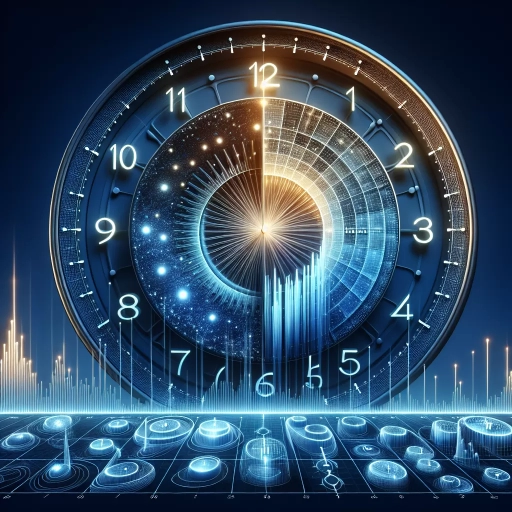How Much Seconds Are In A Day

Understanding the Basics of Time
The Concept of Time
Time is a fundamental aspect of human life. It's the medium through which we structure our daily activities and make sense of the world around us. Time is a linear continuum that's always moving forward, from the past, through the present, into the future. It's measured in fractions of seconds, seconds, minutes, hours, days, weeks, months, and years. The standard units of time that we use are based on the clocks and calendars that were developed and refined over thousands of years by various civilizations.
Units of Time
The second (symbol: s) is the base unit of time in the International System of Units (SI). It's defined as the duration of 9,192,631,770 periods of the radiation corresponding to the transition between the two hyperfine levels of the ground state of the caesium-133 atom. This definition ensures that the second is equitably measurable anywhere in the universe with a suitable apparatus. The minute and the hour, however, aren't SI units. They're non-SI units that are accepted for use with SI because they're widely used in everyday life:
- A minute (symbol: min) consists of 60 seconds (based on sexagesimal or base-60 counting).
- An hour (symbol: h) comprises 60 minutes (again, based on sexagesimal counting).
The Day
A day is the period during which our planet Earth completes one full rotation on its axis in relation to the Sun. The word "day" can be used to refer to the 24 hour period, or to the daytime period during which the sun is above the horizon. The day is often subdivided into 24 hours, each hour into 60 minutes, and each minute into 60 seconds. This makes a full day contain 86,400 seconds (24 hours * 60 minutes/hour * 60 seconds/minute).
Calculating the Seconds in a Day
Basic Calculation
Calculating the number of seconds in a day is as straightforward as multiplying the number of hours by the number of minutes, and then multiplying that result by the number of seconds. Given that there are 24 hours in a day, 60 minutes in an hour and 60 seconds in a minute, the calculation becomes: 24 hours/day * 60 minutes/hour * 60 seconds/minute = 86,400 seconds/day. Therefore, a day – in terms of hours, minutes, and seconds – amounts to 86400 seconds.
Considerations of Leap Seconds
It's important to note that while there are generally 86,400 seconds in a day, occasional slight adjustments are made in our timekeeping systems. These are called leap seconds, and are added every so often to compensate for the slightly imperfect speed at which the Earth spins. Over the course of a year, these discrepancies can add up, which is why leap seconds are periodically inserted into our timekeeping systems. However, it's still accurate to say that under normal circumstances, a day consists of 86,400 seconds.
Scientific and Astronomical Conceptions
In science and astronomy, when measuring the exact time it takes for the Earth to spin on its axis (which determines the length of a day), the situation gets a little more complicated. This is because the Earth's rotation varies minutely due to tidal friction, atmospheric conditions, Earth's elliptical orbit around the sun, and the planet's nonperfectly spherical shape. These factors can influence the exact number of seconds in a day, but for most purposes and intents, it is perfectly acceptable to round that number to 86,400 seconds.
The Impact of Understanding Time Measurement
Applications in Everyday Life
Knowing how many seconds are in a day might seem like a trivial detail, but it's an element of knowledge that has substantial utility and relevance in everyday life. It's integral to so many aspects of our lives, from scheduling our daily activities to tracking the minutes we spend on different tasks, planning our sleep-wake cycles, and organizing our routines. Furthermore, our smartphones, computers, GPS devices, and numerous other technologies heavily rely on precise timekeeping.
Relevance to Science and Technology
In the realms of science and technology, precise time measurement underpins countless procedures and experiments. Science has taught us that precision in measuring time is critically important. For example, in wireless communication systems, milliseconds can make the difference between successful data transmission and a dropped call. In high-frequency trading, microsecond-level latencies can make or break profits. In space navigation, timing accuracy of nanoseconds can affect satellite tracking.
Philosophical Viewpoint
Finally, from a philosophical perspective, understanding the concept and measurement of time can lead towards a greater appreciation of our existence and the universe. It stirs wonder and curiosity, inspiring questions about time, space, reality, the universe, and human existence. It reminds us of the fleeting nature of time and encourages us to make the most of every second.